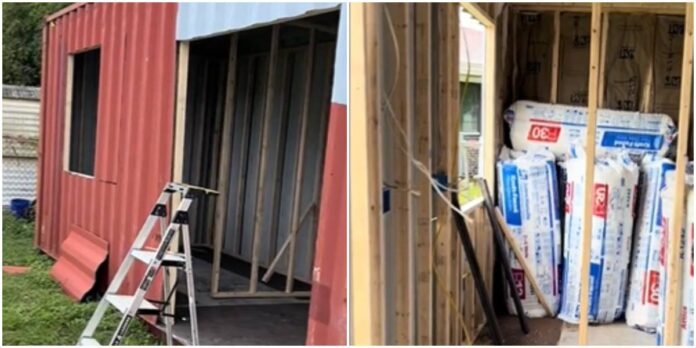
Photo: TikTok video @el.turko.y.la.cubana
As housing costs skyrocket across the United States, Miami is experiencing a particularly acute housing crisis. With offers often exceeding affordability, many residents, including a significant Cuban population, are seeking innovative solutions. One such solution is the burgeoning trend of container homes, a concept that blends creativity with necessity. Recently, a Cuban entrepreneur, Anais, has taken to social media to document her journey of transforming a shipping container into a livable space, showcasing both the process and the potential an unconventional dwelling can offer.
Rising Housing Costs in Miami
The demand for housing in Miami has skyrocketed in recent years, driven by various factors including foreign investments, an influx of residents escaping colder climates, and the appeal of the city’s vibrant cultural scene. A combination of these elements has led to consistently rising rent prices and home values, pushing many into precarious situations. Reports indicate that Miami has become one of the most expensive cities in the U.S. regarding housing costs relative to income, second only to New York City. For many, the struggle to find affordable housing is an everyday reality, leading to increased interest in alternative housing options, such as container homes.
Anais’s Entrepreneurial Vision
Anais, a native Cuban living in Miami, decided to build a container home in her backyard, motivated not only by the urgent need for income but also by the desire to create a comfortable living space for herself and her family. In a viral TikTok video posted on her account “@el.turko.y.la.cubana,” she shares her ambitious project with viewers. The clip highlights the construction process, offering glimpses of the inner workings as workers partition the space for two bedrooms, a living room, kitchen, and bathroom, as well as a small outdoor terrace.
In her own words, Anais describes her vision for the container home: “It’s 40 feet long and will have two bedrooms, a bathroom, a kitchen, and a living room. I also plan to include a terrace.” This project, she notes, serves both as an avenue for potential rental income and a personal retreat for her family.
The Online Response
Anais’s project has captured considerable attention, especially within the Cuban community, leading to dialogues around housing, creativity, and survival in a challenging economy. TikTok users have flooded her video with inquiries and comments, expressing curiosity about the construction process, necessary permits, and how to navigate the local regulations surrounding such projects.
While many viewers have expressed admiration for Anais’s initiative, some have raised concerns about the feasibility and legality of constructing a home from a shipping container. Discussions have centered on important questions such as drainage systems, waste disposal methods, and permitting processes. Comments range from requests for detailed insights about the project’s logistics to skeptics questioning the building’s safety: “In what homestead is that? That is not allowed in any city,” one user remarked.
The Debate Over Container Homes
The appeal of container homes lies in their affordability, quick construction time, and potential for creative design. However, the method is not without its drawbacks. Critics argue that shipping containers, if not properly insulated and modified, can pose safety risks and may not comply with municipal building codes. The materials used and the structural integrity need to be carefully assessed to meet local housing regulations.
Moreover, the focus on innovative housing solutions must also address essential services such as access to water, sewage, and zoning laws — all critical factors for successful integration into urban spaces.
The Broader Housing Crisis
Anais’s project sheds light on a more extensive issue: the significant housing crisis that afflicts Miami and similar metropolitan areas. The real estate market often favors investors over local residents, contributing to a lack of affordable housing options. The COVID-19 pandemic exacerbated these challenges, causing a frenzy in property prices and leading to an imbalance in the supply-demand equation.
As cities evolve to accommodate growing populations and increasing demand, alternative housing solutions like container homes may play a pivotal role in addressing housing shortages, affordability, and innovative urban living.
Conclusion
Anais’s journey into the world of container homes is as fascinating as it is inspiring. Her determination to carve out a space for herself and her family amidst Miami’s housing chaos encapsulates the spirit of resilience. As she continues to document her project, it serves not just as a testament to individual ingenuity but also as a beacon for communal discussion around tackling one of today’s most pressing urban challenges.
The emergence of container homes could be a possible solution for many, but it also encourages a larger conversation regarding housing policy, community planning, and the future of urban living. As Miami faces ongoing challenges, the stories of innovators like Anais can inspire hope and a rethink of how we approach housing in our cities.














